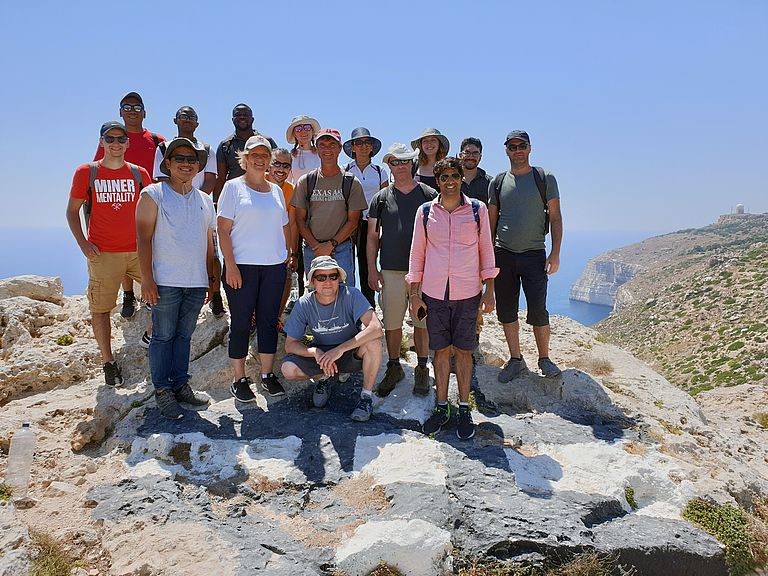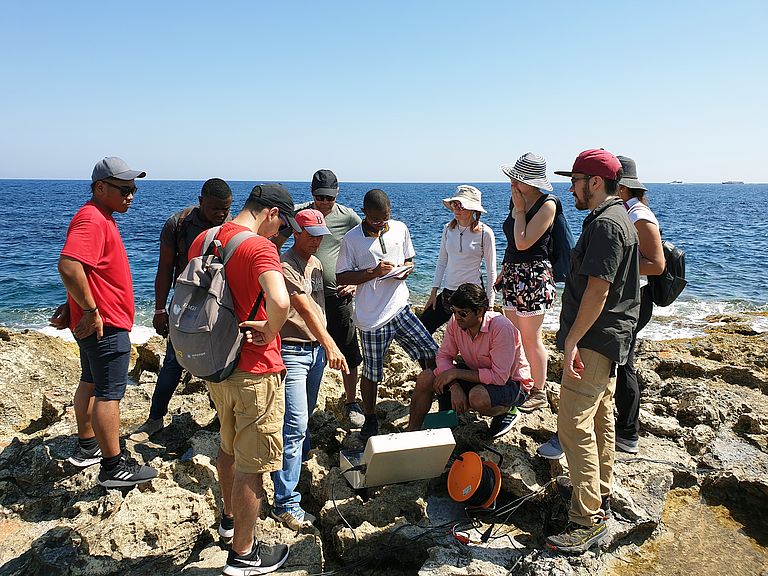Groundwater at the sea floor
Maltese-German summer school on freshwater resources in the ocean
Offshore groundwater is a topic of increasing interest as a potential resource to alleviate water stress for many coastal communities. Malta is one of the 10 most water-stressed countries worldwide and recent evidence suggests that groundwater (fresh water) occurs offshore the Maltese coast, but it is unknown how much of this vital resource can be found beneath the seafloor.
From 1-5 July the Marine Geology & Seafloor Surveying group at the University of Malta and GEOMAR Helmholtz Centre for Ocean Research Kiel, Germany hosted a summer school to engage students in an open dialogue about these important societal and environmental issues. The summer school entitles "Understanding marine hydrogeology through the lens of geophysics:
Bridging the gap across the coastal zone" was jointly supported through two international research projects: SMART (smart.geomar.de) and MARCAN (www.marcan.eu). Both projects are currently investigating key questions regarding offshore groundwater and are funded by the Helmholtz European Partnering Initiative and the European Research Council (ERC), respectively.
The summer school was hosted at the University of Malta – Msida campus and consisted of postgraduate students and instructors from 12 countries, having both diverse cultural and scientific backgrounds. The theme of the summer school centered on the benefits and limitations of geophysical methods, which provide a view beneath the seafloor to map the overall location and geometry of offshore aquifers. Students actively learned about important theory and applications of these methods that can be applied to advance groundwater research along the Maltese coast.
For example, Rob Evans from Woods Hole Oceanographic Institution, USA gave a series of lectures on the use of electromagnetic methods which is one of the key methods for detecting offshore groundwater, and Mark Everett from Texas A&M University, USA provided the geophysical instrumentation for field experiments.
During the week, students and instructors engaged in lively discussions of how scientists can better interface with decision and policy makers to develop a best practice guide on if and how offshore groundwater can be used sustainably to assist coastal communities like Malta who are running out of freshwater resources.
Contact:
Dr. Andreas Villwock (Communication & Media), Phone: +49-431 600 2802, presse(at)geomar.de




